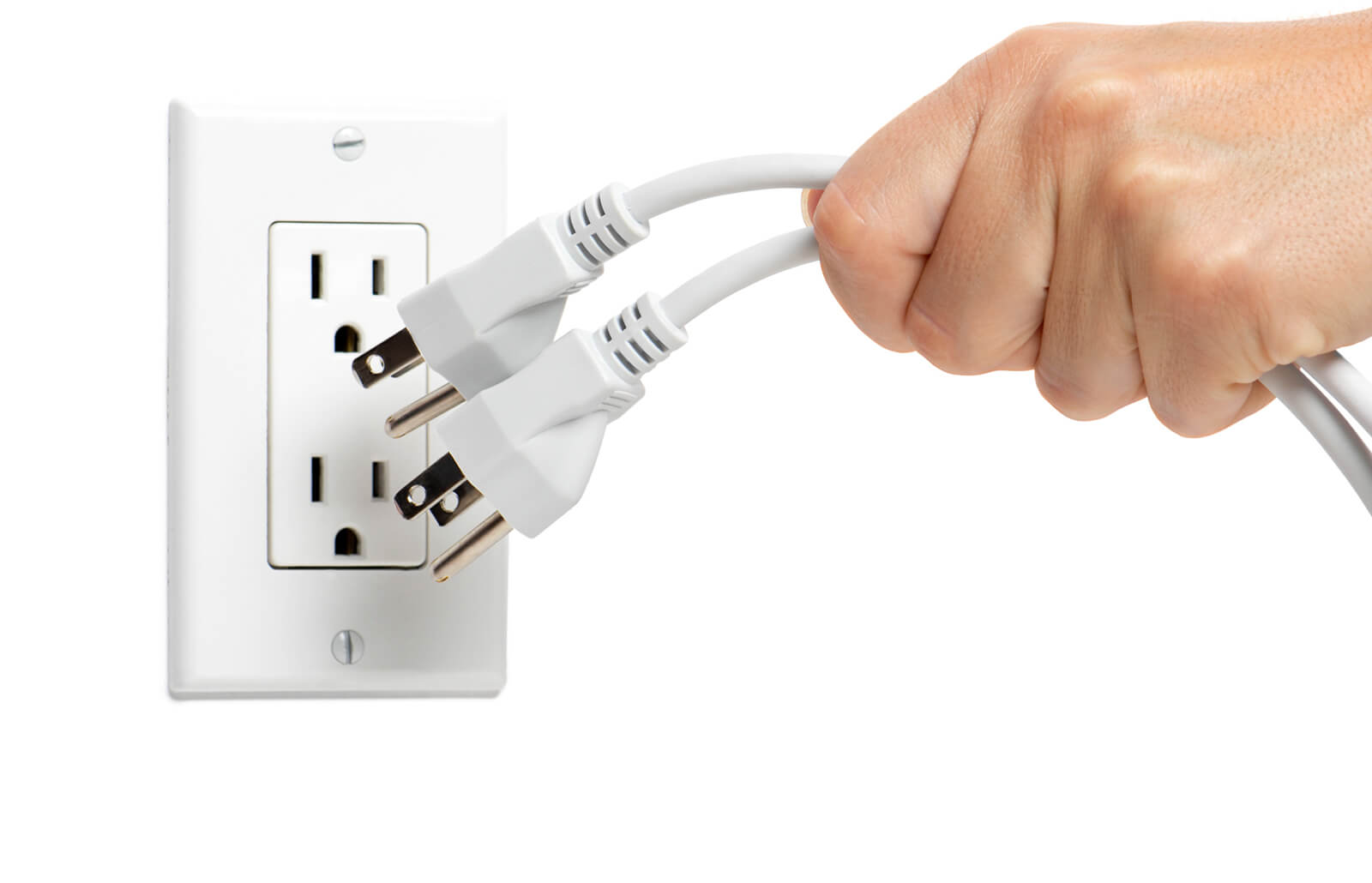
The key to reducing your carbon footprint is to limit your energy use, and consume less. That said, any behavior that conserves resources—recycling is one example—will reduce greenhouse gas pollution.
Here are some practical ways to cut your greenhouse gas emissions:
Instant Changes
1. Unplug your electronics

Many appliances consume energy even when you’re not using them. This is called “phantom load,” and it can cost you $100 or more per year. Prevent it by directly unplugging electronics or by plugging items into a surge protector/power strip and turning the whole strip off when you leave a room.
2. Adjust your thermostat
Turning up your air conditioning by several degrees can reduce your energy bill, keeping CO2 out of the air and dollars in your wallet. In the winter, putting on a sweater instead of blasting the heat can also save a hefty amount of energy.
3. Alter your driving habits

Small changes to your driving style can make a big difference in carbon emissions.
- Stop idling: An idling car gets exactly 0 miles per gallon. If you are parked or stuck in a gridlocked traffic jam, turn it off.
- Accelerate gently: Hard acceleration just takes you to the gas station faster.
- Reduce your speed: Think about how much more energy it takes to run than walk. Now think about how much more gas your car uses at 70 mph than at 55 mph.
4. Green-clean your clothes
Greening your laundry is as easy as hitting the cold water button and drying your clothes on a rack instead of in machine. You’ll save money on electric bills too – about 5% of all electricity used in U.S. homes is used to dry clothes.
5. Eat lower on the food chain
 Significant resources are needed to produce animal products for food compared to plant-based foods. Red meat in particular has a very high carbon footprint. A vegan meal is orders of magnitude smaller in terms of emissions compared to a meat or diary rich meal. While this remains a somewhat controversial topic, it is generally accepted that meat and dairy consumption needs to decline in order to feed both the growing global population as well as reduce global emissions.
Significant resources are needed to produce animal products for food compared to plant-based foods. Red meat in particular has a very high carbon footprint. A vegan meal is orders of magnitude smaller in terms of emissions compared to a meat or diary rich meal. While this remains a somewhat controversial topic, it is generally accepted that meat and dairy consumption needs to decline in order to feed both the growing global population as well as reduce global emissions.
Long-Term Thinking
1.Consider travel alternatives
Flying is the most carbon intensive mode of transport, and is often the largest contributor to a person’s individual carbon footprint. The average cross-country, round-trip flight emits about 4,500 pounds of carbon emissions. Short flights are the worst, emitting more CO2 per mile traveled than medium to longer flights. So, when possible, take a train or bus instead of flying. Just think of all the security and TSA headaches you’ll avoid!
2.Don’t skip tune-ups
Good maintenance usually equals efficiency. Care for your appliances and they will reward you with lower energy costs and longer operating lives.
- Car: Follow the scheduled service guidelines for your car and keep the tires properly inflated.
- Heating and Cooling: Change the air filter in your air conditioning unit and periodically tune up your furnace.
- Refrigerator: Keep the coils on the back of your refrigerator clean.
3. Make conscious purchases
When making buying decisions, consider how your everyday purchases will affect the environment.
- Don’t buy it: Before making a purchase, consider whether you will really use it. Impulse purchases waste your money and the Earth’s resources.
- Buy items with less packaging: More packaging results in more weight, which uses extra energy during manufacturing, shipping, and waste disposal.
- Size it right: If you buy something like a car or a home that’s bigger than necessary, you will commit yourself to larger energy or gas bills every month.
4. Rethink Your Waste
Your trash really is someone’s else’s treasure. Recycling is still important, since materials like aluminum and steel require a lot of energy to mine and refine. You can also reduce greenhouse gas emissions even more by composting your organic waste at home. If you don’t have a yard, try vermicomposting inside your home.
5. Prioritize efficiency
Easy, low-cost investments can significantly improve your household’s efficiency.
- Switch to LEDs: LED light bulbs are more expensive than traditional incandescent bulbs, but because they are so efficient, they will save you money over their lives. LEDs can also last as much as 20 times longer than an incandescent bulb and 3 times longer than a CFL.
- Wrap your water heater: For just a few dollars, you can wrap your water heater in a heat blanket, saving cash and reducing carbon emissions.
- Buy efficient appliances: When you plan to purchase new appliances, look for ENERGY STAR qualified products. But don’t just settle for the certification—pick the model that uses the least amount of energy possible. If you don’t need a full sized refrigerator, don’t buy one.
- Seal those drafts: Use caulking for leaky windows and get a door sweep to keep the heat in your house and CO2 out of the atmosphere.
Sources:
- All photos used in this blogpost are sourced from the internet, and the rights belong to their respective owners
- Native. “Sustainability Tips & Energy Saving Suggestions | NativeEnergy,” January 16, 2020. https://native.eco/for-individuals/sustainability-tips/.


